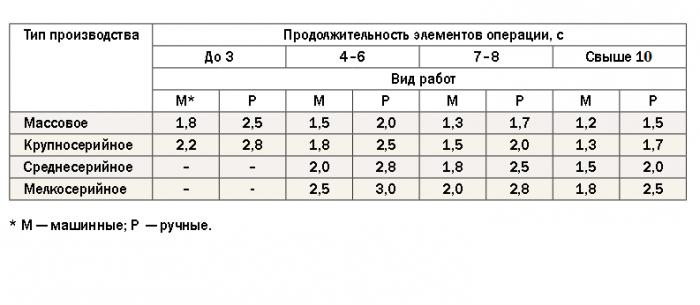- Author: admin
- Category: Category


Vremeni ostavalos' ochen' malo i ja reshil uskorit' delo, ustroiv sorevnovanie mezhdu dizajjnerami. Dzhin Bordinat, zavedujushhijj otdelom dizajjna, 27 ijulja sobral v.
Abstract Hereditary angioedema due to C1 inhibitor deficiency (C1-INH-HAE) is a rare autosomal dominant disease characterized by recurrent life-threatening oedemas and/or abdominal pain and caused by mutations affecting the C1 inhibitor gene, SERPING1. We sought to investigate the spectrum of SERPING1 mutations in Serbia and the possible genotype-phenotype association.
C1-INH-HAE was diagnosed on the basis of clinical and laboratory criteria in 40 patients from 27 families; four were asymptomatic. Mutational analysis of the SERPING1 gene was performed by sequencing and multiplex ligation-dependent probe amplification. Disease-causing mutations in SERPING1 were identified in all patients.
In C1-INH-HAE type I, we identified 19 different mutations, including 6 missense mutations, 6 nonsense mutations, 2 small deletions, 1 small insertion, 2 splicing defects and 2 large deletions. Two of the mutations (c.300C>T and c.1184_1185insTA) are reported here for the first time. All C1-INH-HAE type II patients from three families harboured the same substitution (c.1396C>T).
Based on the type of mutation identified in the SERPING1 gene, patients were divided into two groups: group 1 (nonsense, frameshift, large deletions/insertions, splicing defect, and mutations at Arg444) or group 2 (missense, excluding mutations at Arg444). Significant differences were found in the clinical severity score (P = 0.005), prevalence of laryngeal (P = 0.040) and facial (P = 0.013) oedema, and long-term prophylaxis (P = 0.023) between the groups with different types of mutations. Because our population consisted of related subjects, differences in the severity score between mutation groups were further confirmed using the generalized estimating equation (P = 0.038). Our study identified 20 different disease-causing mutations, including two novel mutations, in all C1-INH-HAE patients, highlighting the heterogeneity of mutations in the SERPING1 gene.
Furthermore, it appears that mutations with a clear effect on C1-INH function might be responsible for a more severe disease phenotype. Introduction Hereditary angioedema due to C1 inhibitor deficiency (C1-INH-HAE) is a rare autosomal dominant disease characterized by recurrent and potentially life-threatening swelling of the skin and upper respiratory tract and abdominal pain. It has an estimated prevalence of one case per 50,000 persons [–]. This rare disease is caused by mutations affecting the C1 inhibitor (C1-INH) gene, SERPING1. C1-INH-HAE can be further divided into two subtypes. C1-INH-HAE type I results in low levels of C1-INH and accounts for 85% of cases.
C1-INH-HAE type II results in normal levels of ineffective C1-INH and accounts for 15% of cases [–]. C1-INH is a serine protease inhibitor, and its main function is preventing inappropriate or excessive activation of the complement system. In addition to the classical pathway, C1-INH also controls the lectin complement pathway and contact, fibrinolytic and coagulation cascades, thus representing a key regulator of several immune and inflammatory pathways [,]. The SERPING1 gene (OMIM #606860) is located on chromosome 11.q12-q13.1, and it consists of eight exons. The first exon contains 38 bp of noncoding sequence, and the second has a 22 bp-long signal peptide before the first methionine; the seven introns distributed over 17 kb contain 17 repetitive Alu sequences [,]. To date, more than 400 different mutations distributed across the entire SERPING1 gene have been described, ranging from nucleotide substitutions to small insertions and deletions to large deletions and duplications (HAEdb, ) [].
De novo mutations in SERPING1 account for approximately 25% of cases with C1-INH-HAE [,]. The aim of this study was to analyse and report the mutational findings in a cohort of 40 patients and four asymptomatic subjects from 27 Serbian families. This is the first report investigating the molecular causes of C1-INH-HAE in Serbia. Furthermore, due to high SERPING1 gene and C1-INH-HAE clinical variability, we investigated the genotype-phenotype relationship to test the hypothesis that nonsense mutations, frameshift mutations, large deletions/insertions, splicing defects, and mutations at Arg444 might be responsible for a more severe disease phenotype in comparison to missense mutations, with the exception of mutations at Arg444. Patients The patients were diagnosed and recruited during a 20-year period (1995–2015) at the Clinical Center of Serbia (Clinic of Allergy and Immunology), which serves a population of 4 million inhabitants. The Clinical Center of Serbia is a tertiary medical centre responsible for the management of rare diseases in central, northern and western parts of Serbia.
Up for your consideration is a NIB Midwest Super Stearman kit (1/6th scale I believe). Only been opened a couple of times to look at the plans. Contents have never been disturbed. Midwest super stearman manuals in pdf download.